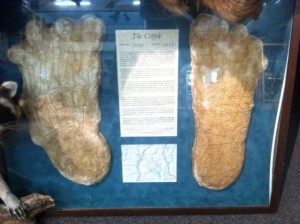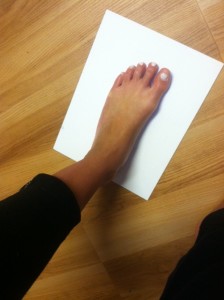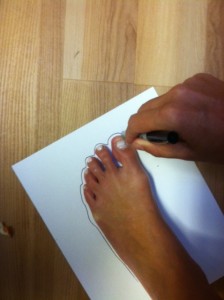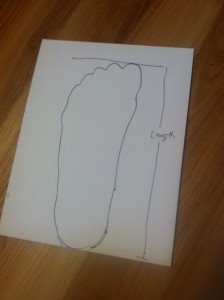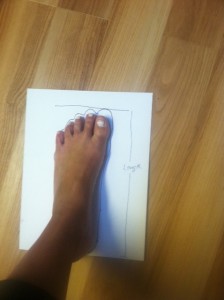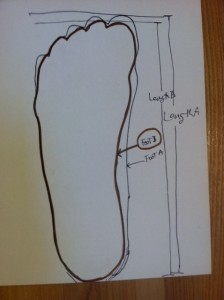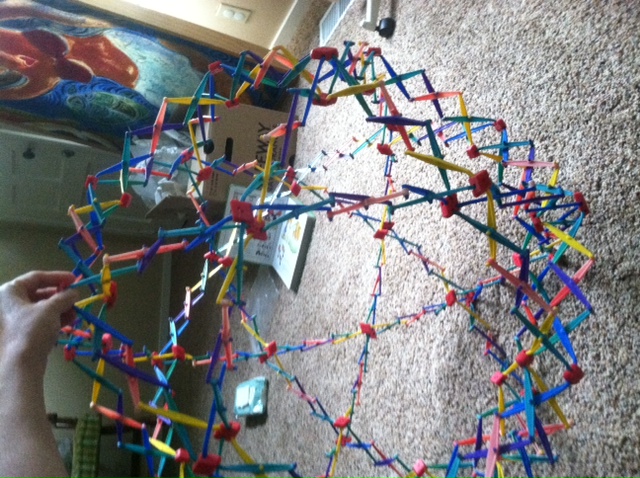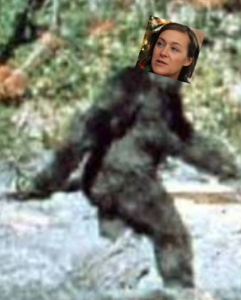Do you have one foot longer than the other? Have your feet gotten longer during your pregnancy or in other scenarios? Check it.
Yesterday I was hanging out in the local Audubon center when I stumbled upon this:
BIG FOOT SCHMEAR!
(If you haven't been reading lately, go back to this post and watch the video.)
So, anyways, this trip down memory land (I once wrote a paper on Big Foot Mechanics in college, analyzing the infamous Patterson film) triggered today's post.
To proceed you'll need:
1. A piece of paper.
2. A pen.
3. Working knowledge of external rotation (see this video here).
ARE YOU READY?
1. Stand on a piece of paper with your foot pointing straight forward, completely loaded. Keep your muscles relaxed. No need to correct anything yet (we want to see where your foot is most of the time).
2. Trace around your foot.
3. Step off and measure your foot length.
(I always feel rude when I write step off.)
4. Place your foot back into your print and then externally rotate your thigh until your *knee pit* is in neutral (see external rotation video linked above for knee pit schoolin').
(I FORGOT TO TAKE A PICTURE, SORRY.)
6. Highlight your "rotated thigh" foot with a different color and re-measure your length (or width or just shape in general). Here you can see not only is my left foot (which always runs about 1/4 size longer than my right) shorter when my thigh and shin are less rotated off their axis, it is also more narrow (unschmeared) once I've undone the triplanar distortion of my ankle complex.
Same foot + different activity at the hip = new shape.
FYI, my left thigh is more internally rotated than my right when I'm not correcting it.
Do not assume anatomical variation implies wide biological (read: natural) variability. It is logical to conclude, when you see parts of different sizes and shapes that there is only an anatomical difference at hand -- that one's bones are longer or wider on one side as compared to another. Most of the time though, differences like these are the net accumulation of user behavior and not an actual variation of segment size.
One of my favorite toys makes a good example of how something with a fixed mass
can occupy more space simply through lever rearrangement.
Biomechanics lesson over.
I'm out.
Note to all our Healthy Foot Practitioner grads out there: This makes an excellent in-class activity!
